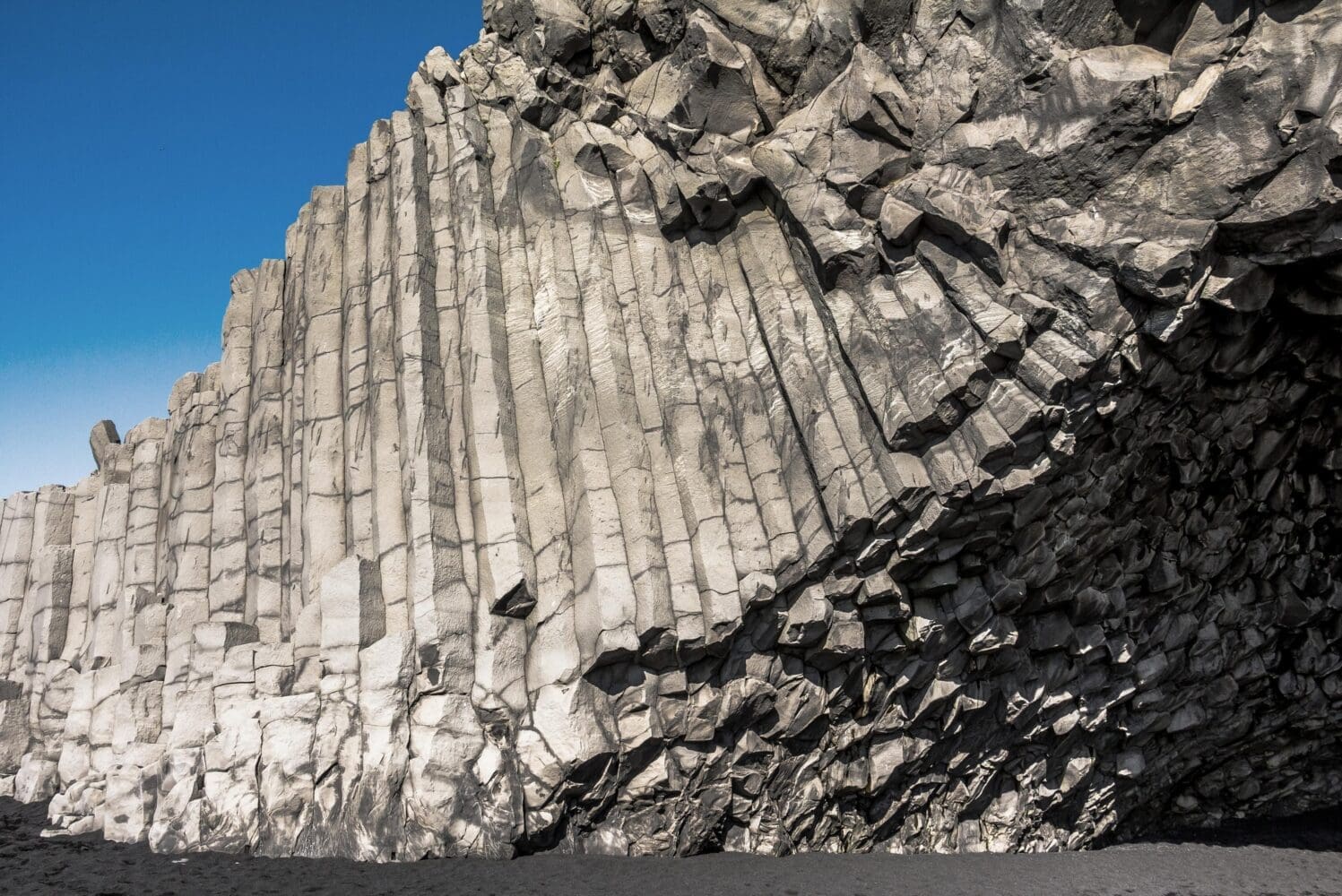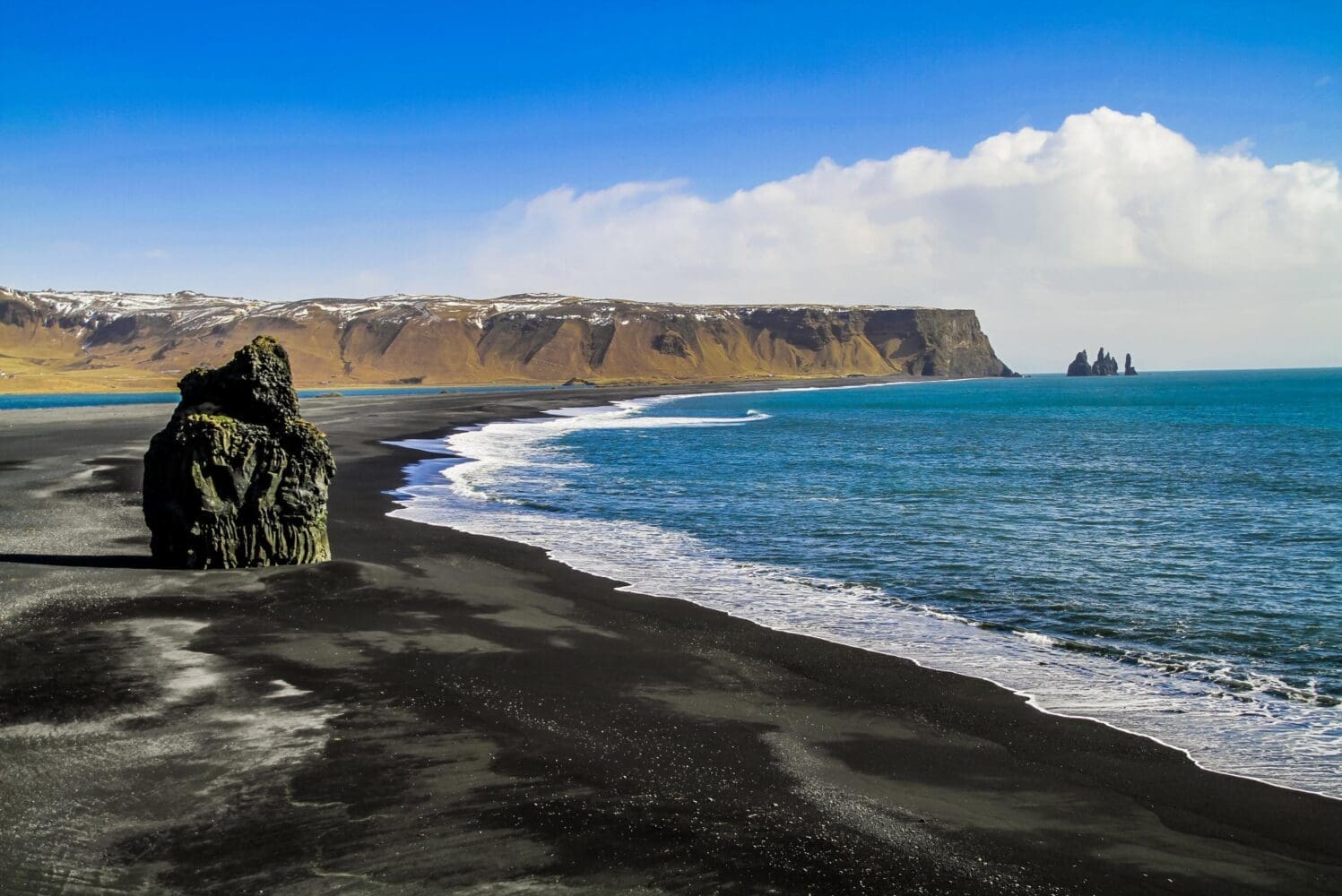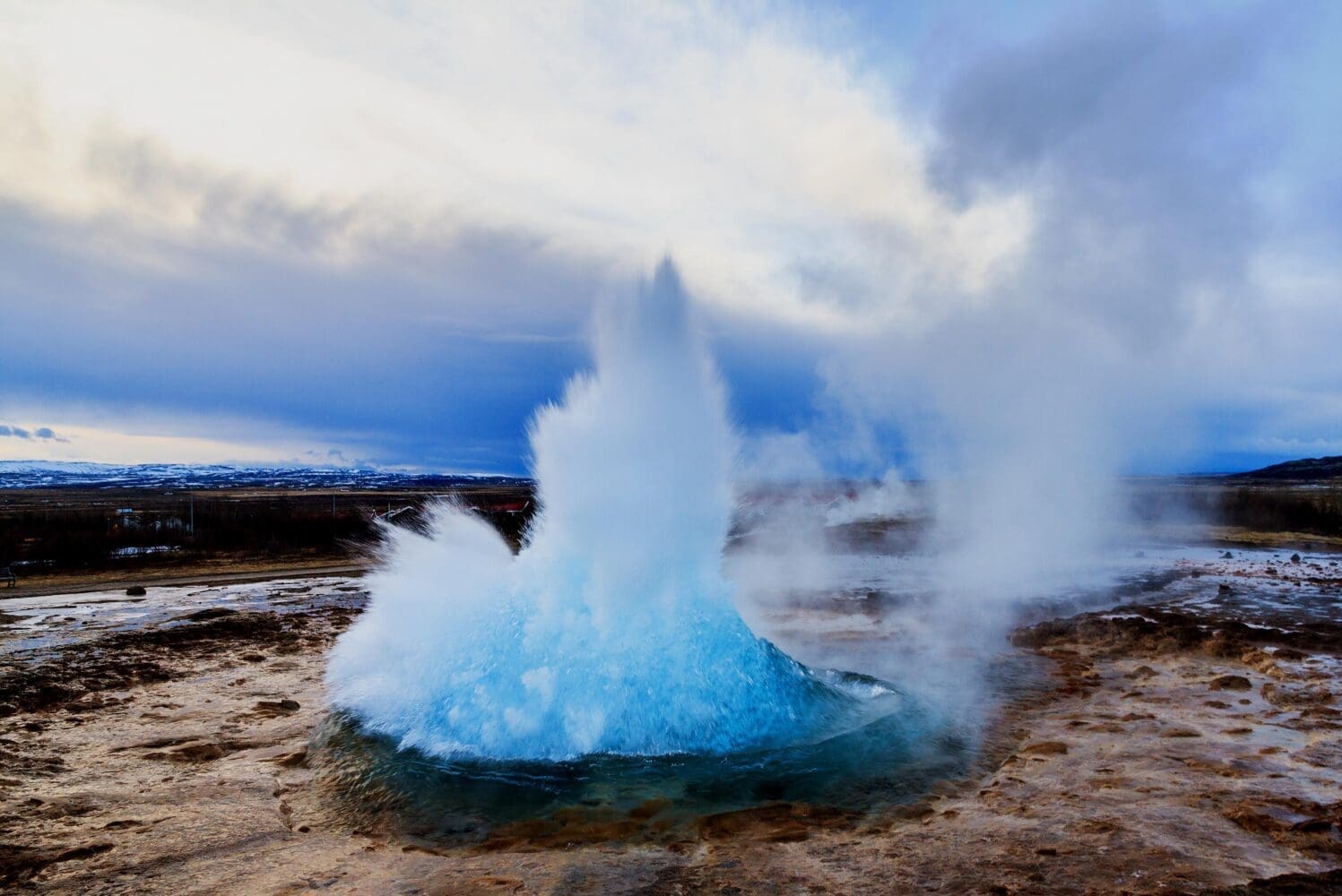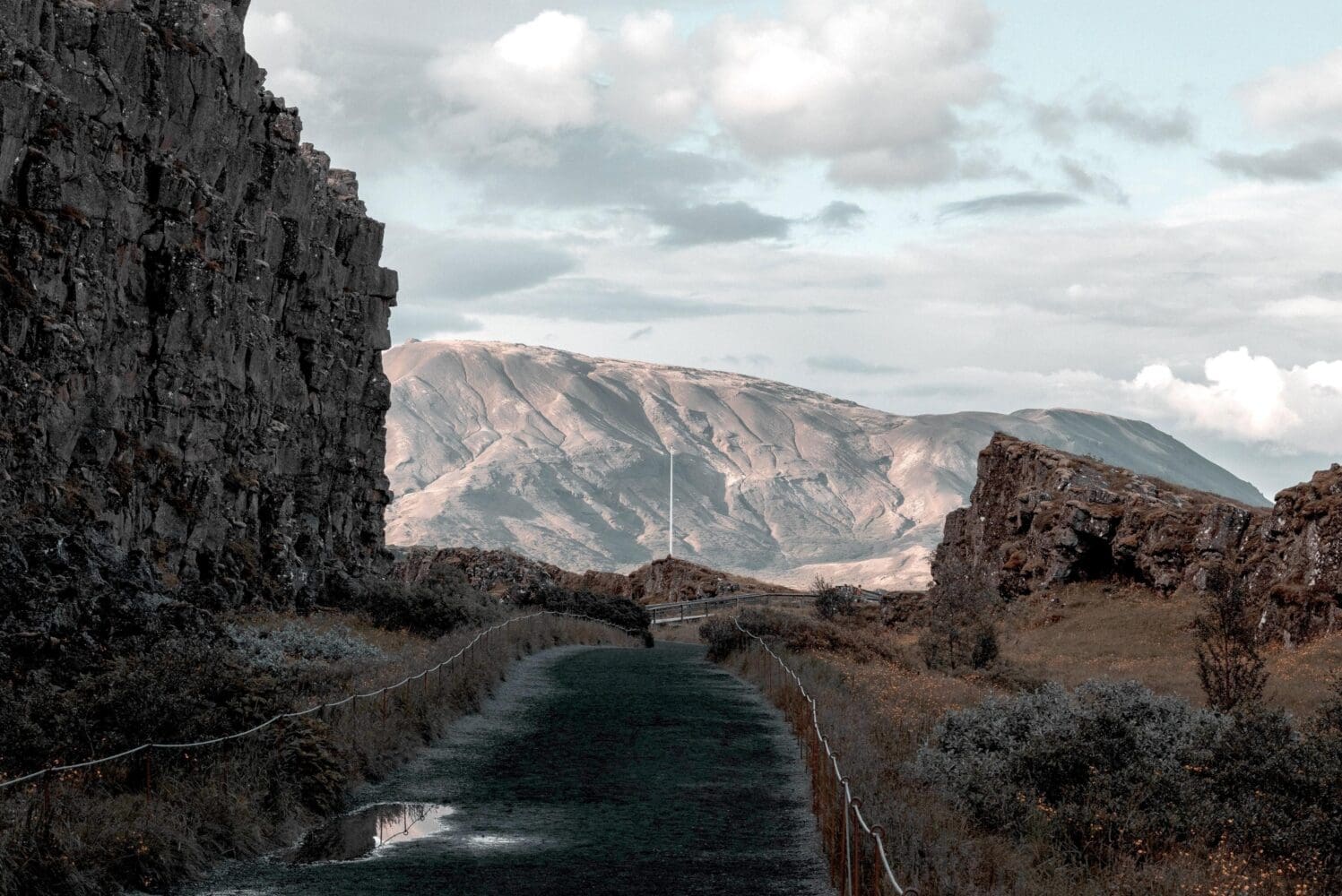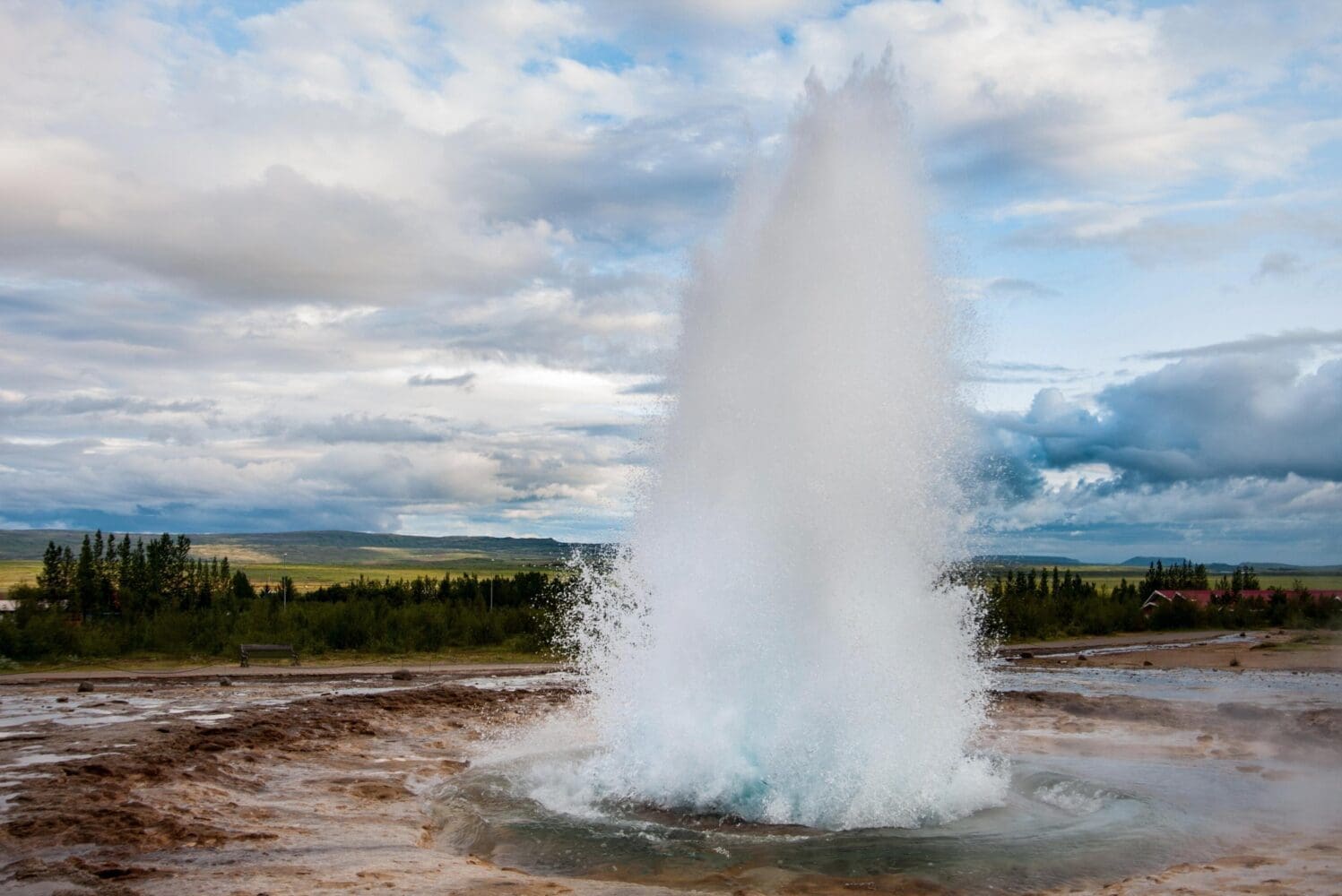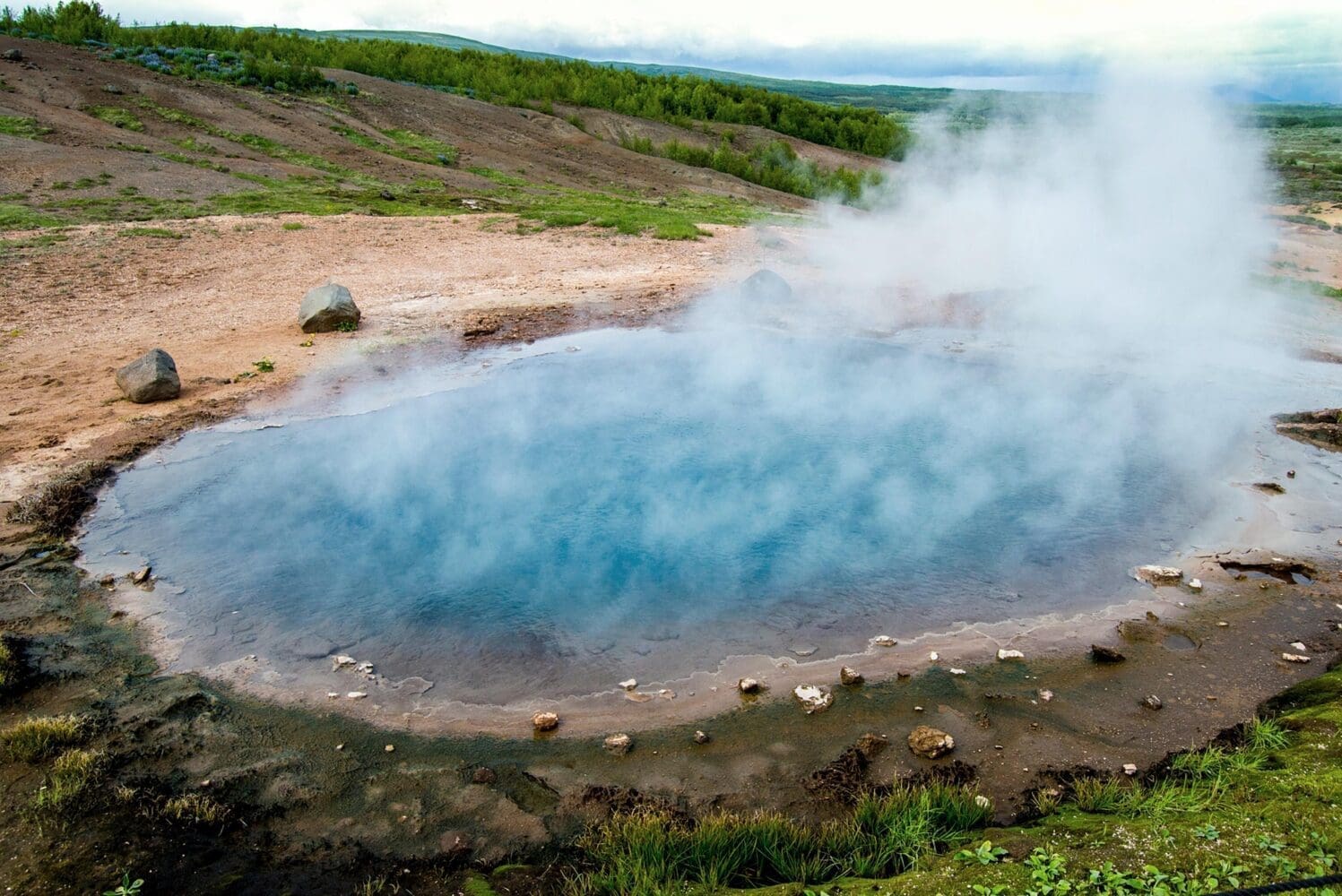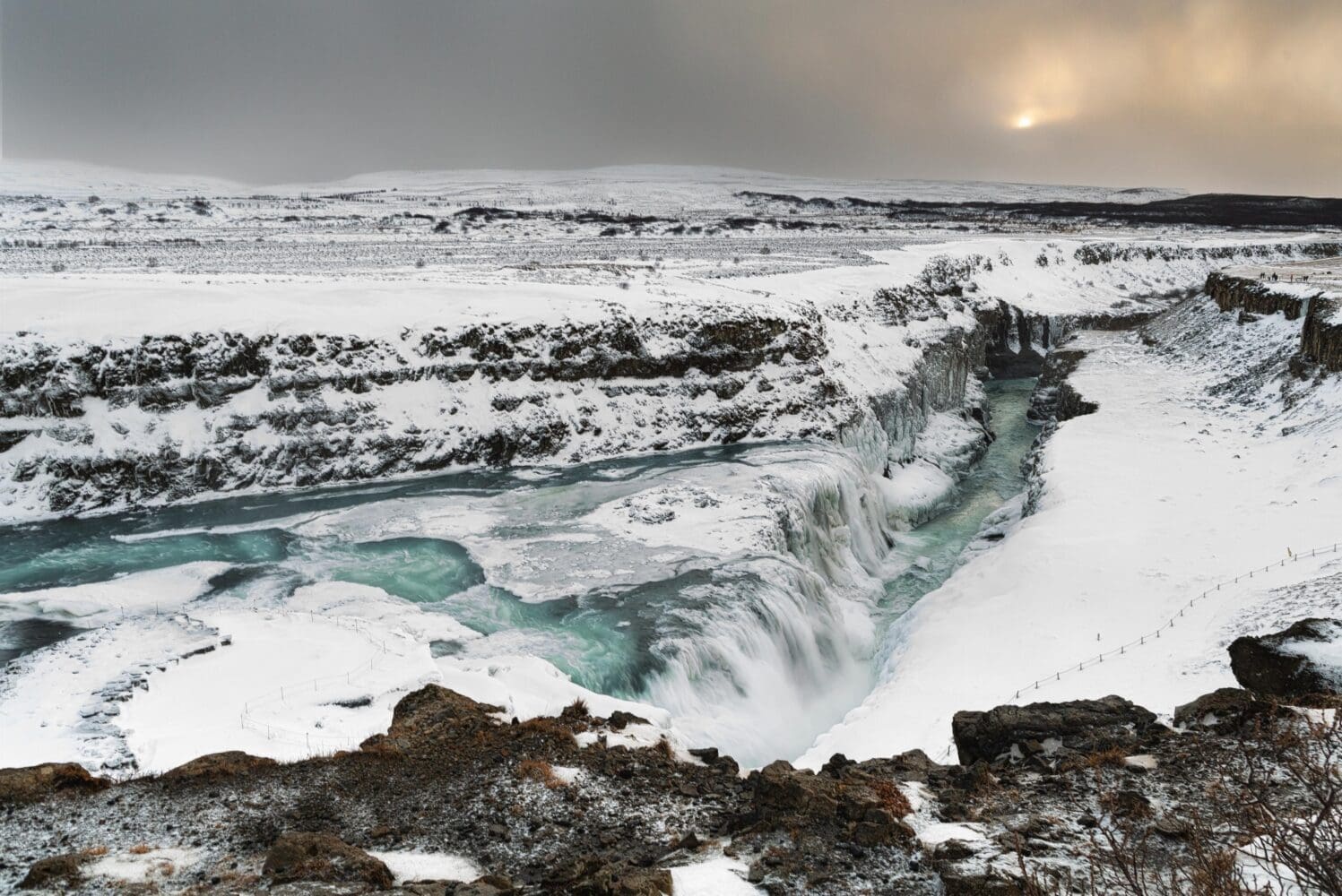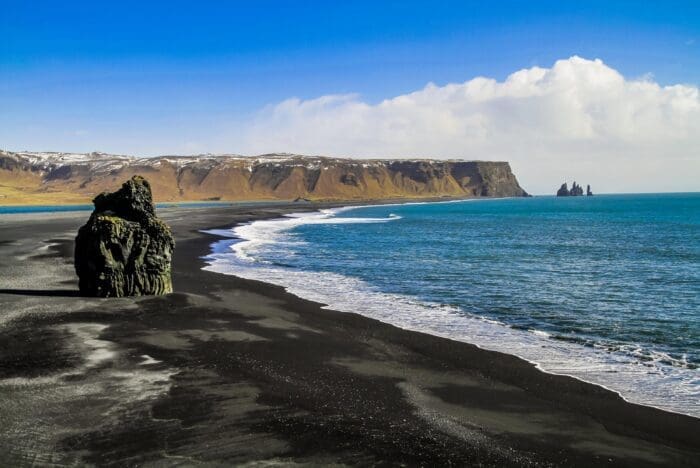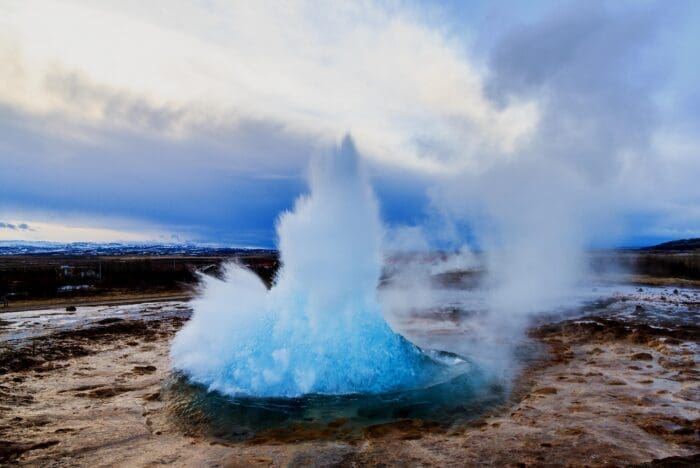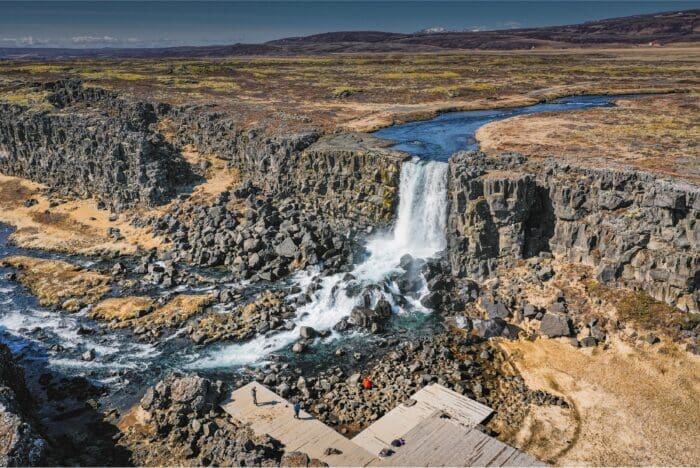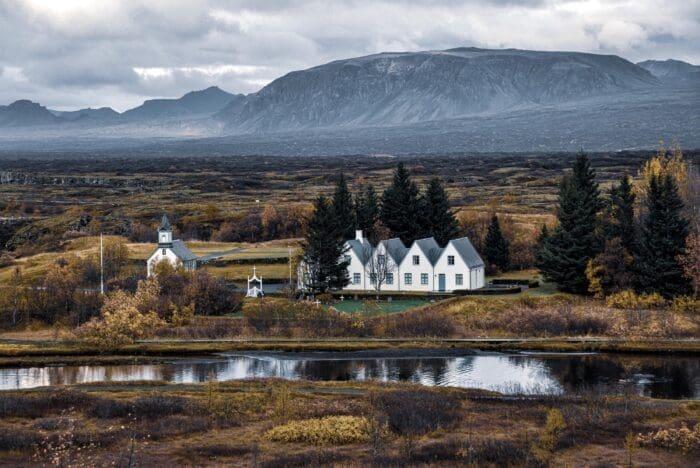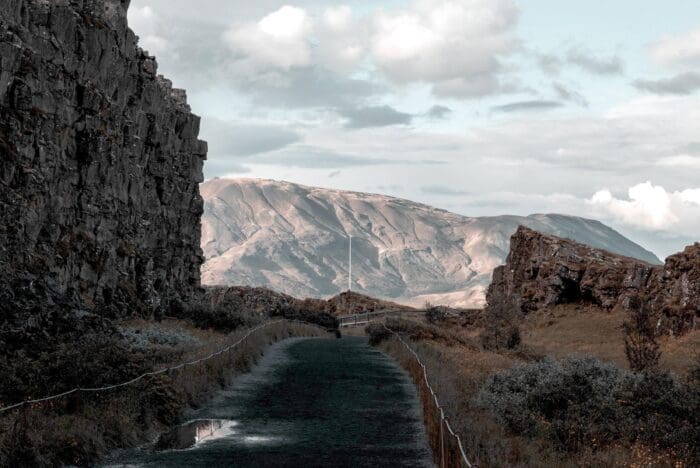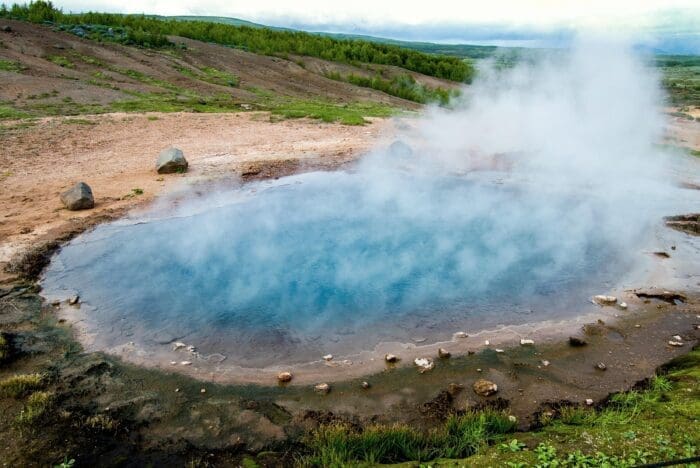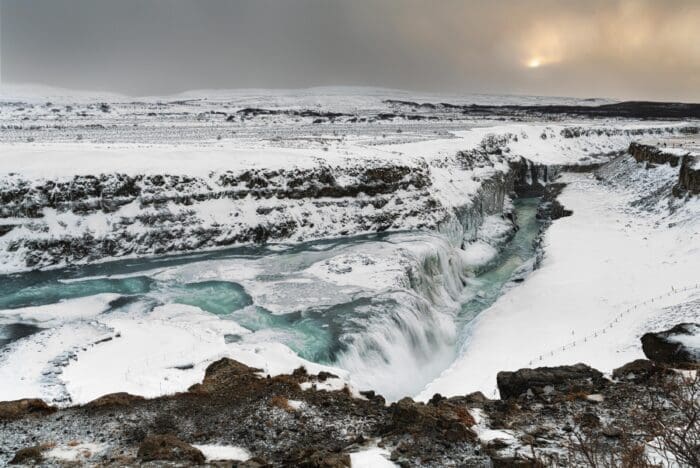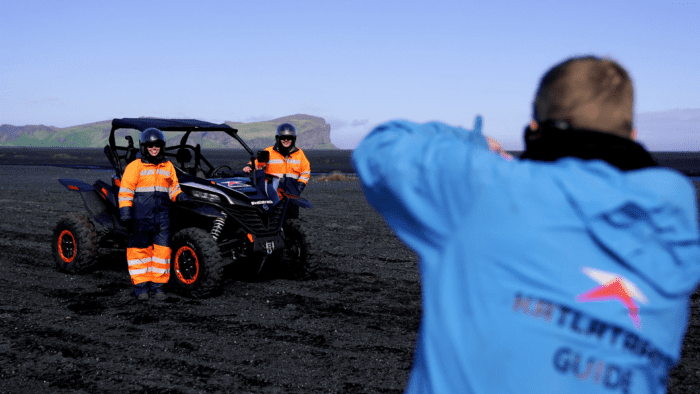
Private Classics: Golden Circle & South Coast Tour
Visit the most popular attractions of Iceland in only one day with the comfort of a private tour.
Please note:
The weather can be unpredictable in Iceland so during winter you may expect us to occasionally need to alter the tour itinerary if weather/road conditions are unfavorable.
Available: All year
Duration: Approx. 10hrs, depending on time spent at stops.
Pick-up: From your hotel/accommodation within the Reykjavik Capital Area.
Highlights
The Golden Circle:
- Thingvellir National Park
- Geysir hot springs geothermal area
- Gullfoss waterfall
The South Coast:
- Seljalandsfoss waterfall
- Skógafoss waterfall
- Reynisfjara black sand beach
Description
If you have limited time in Iceland, you can combine the most popular attractions during your stay: the classical Golden Circle and South Coast!
Heading out of the city, you will pass Icelandic farms on the way to the first stop of the tour; Thingvellir National Park. This is the first national park in Iceland and the first UNESCO World Heritage Site in our country. You will start at Hakið lava mesa, a viewpoint that gives you an amazing view over the Thingvellir area and Thingvallavatn, the largest natural lake in Iceland (about 83.7 square kilometers and 114 meters at its deepest point). You go down from Hakið into Almannagjá by Thingvallabær rectory, today serving as the Prime Minister's summer house, and Thingvallakirkja, a beautiful wooden church representative for common Icelandic churches. In Almannagjá dwells Öxarárfoss, a 12-meter man-made waterfall from when the Vikings changed the course of the Öxará river to channel into Almannagjá, so they could water their horses and sheep when assembling at Althingi each summer, the Icelandic parliament.
Thingvellir may look familiar to you if you're a Game of Thrones fan, since episodes 1, 5, and 8 of season four were shot here.
Driving through the wooden Thingvellir National Park, passing more beautiful farmsteads, the next stop is the Geysir hot springs geothermal area in Haukadalur valley. This high-temperature area with its colorful hot springs and mud pools is the only place in Europe with hot springs that spout. Geysir is Iceland's most well-known geological phenomenon, giving its collective name geyser to all other hot springs in the world. It is dormant and hasn't spouted since 2016, but its neighbor Strokkur still does every 5-8 minutes, shooting 30 meters of scalding geothermal water into the air. Earthquakes in the area and volcanic activity in our country may cause Geysir to awaken and other hot springs in this geothermal area to show changes.
The last stop is what the Golden Circle derives its name from; Gullfoss waterfall, meaning Golden Falls. This magnificent tiered three-step waterfall is considered the queen of all waterfalls in Iceland, plunging 32 meters into a narrow basaltic gorge. The white glacial river Hvítá, fed by the Langjökull glacier, gives Gullfoss its white and blueish color, and on sunny days its spraying mist forms a spectacular rainbow, sometimes even a double rainbow.
Driving further south we get closer to the coastline with the Atlantic Ocean on one side and volcanoes and glaciers on the other side, and even the famous Hekla volcano can be seen from the road.
We make our first stop on the South Coast at the unique waterfall Seljalandsfoss, which drops like a curtain off a cliff into a beautiful meadow. Behind is a small cave and a walking path extending around the waterfall. This makes for a great angle to photograph this very picturesque waterfall and its surroundings, but be sure to wear good shoes and waterproof clothing before going behind it. We head on and drive past the ice cap Eyjafjallajökull which covers the caldera of a volcano that last erupted in 2010, memorably affecting air traffic throughout Europe. From the road, you will immediately spot the mesmerizing Skógafoss in the tiny Skógar village. It is one of the most beautiful waterfalls in Iceland dropping wide from a cliff that formerly marked the coastline. If the sun is out, the spraying from Skógafoss will form a rainbow and sometimes two. A staircase next to it leads up to a platform above this waterfall, giving you a great view over farmsteads to the ocean and on-site museums give you insight into how Icelanders lived throughout history.
Our last stop is Reynisfjara black sand beach, the most popular visit on the South Coast, with the high basalt pinnacles Reynisdrangar rising out of the sea, and extremely powerful ocean waves crashing against the basalt-columned wall of mountain Reynisfjall and steadily eroding the Hálsanefhellir basalt cave by the beach. Here you need to be extra cautious, as these waves are known as "sneaker waves". Though they may sometimes look calm and harmless, they have snuck up on people and pulled them into the sea, causing fatal tragedies throughout the years when people have gotten too close to the sea. Be careful while admiring this breathtaking area and please respect the puffins and other seabirds nesting in the basalt columns.
After this long day of exceptional landscapes and scenery, we make our way back to the buzzing city life of the Reykjavik Capital Area.
- Private transport in an air-conditioned vehicle
- Pickup & drop-off within the Reykjavik Capital Area
- Knowledgeable & experienced English-speaking driver-guide
- National Park entrance fee
- Parking fees
- Services tax
The Thingvellir National Park was established in 1930, the first national park in Iceland. Then in 2004, it became the first UNESCO World Heritage Site in Iceland for its cultural heritage from the Viking era and the significance of its history and nature.
Þingvellir (e. Parliament Grounds) is a fracture zone situated on the tectonic plates of the Mid-Atlantic Ridge, the North-American and the Eurasian continents, which runs through Iceland from its NE corner to the SW corner, forming a great depression of about 40 km in length and 10 km in width. These boundaries are only visible above ground in very few locations in Iceland. Almannagjá (e. Public’s Rift) forms the eastern boundaries of the North-American plate, while Hrafnagjá (e. Raven’s Rift) forms the western bounds of the Eurasian plate. The area between these two rifts is slowly subsiding, pulling apart by about 3-4 millimeters every year.
Alþingi (e. General Assembly) is the Icelandic parliament, established in AD 930 by the Vikings, and is the oldest parliament in the world. Every summer, Icelanders assembled there till 1798 to set laws, settle disputes, trade goods, and carry out punishments and executions. It was at Althingi that the Icelandic nation agreed to adopt Christianity in AD 1000, superseding the heathen religion Asatru. On 17 June 1944, the establishment of the Republic of Iceland was declared in force after centuries of being under the reigns of the Kingdoms of Norway and Denmark.
- Please respect nature – do not throw out trash or walk on any moss.
- You do not need to print out your e-ticket for environmental responsibility purposes.
- Your private driver-guide can always recommend different restaurants in the area and make stops on the way so you can purchase food/snacks/drinks, but you are also welcome to bring a packed lunch.
- This tour's total duration depends on how long you spend at each stop.
- Road conditions or adverse weather could make some stops inaccessible during winter, so the itinerary may need to be altered if necessary.
- Dress according to the weather by wearing warm and wind-/waterproof clothing in layers and bring gloves and a hat.
- Wear suitable footwear, preferably waterproof with a good grip, in case of slippery conditions due to ice, rain, or gravel paths.
- We may occasionally need to alter the tour itinerary due to unpredictable weather and road conditions in Iceland, especially during winter. The weather in Iceland can be quite unpredictable.
- Difficulty:
- Easy
- Duration:
- 10 hours
- Price From:
- 280.000 ISK

